
19 नवम्बर 1835 को मोरोपंत व भागीरथीबाई की संतान रूप में एक बालिका ने जन्म लिया। काशी में जन्मी इस बालिका का नाम मणिकर्णिका रखा गया। प्यार से इस बालिका को सभी मनु पुकारने लगे। मोरोपंत जी सतारा जिले के वाई गाँव में चिमाजी आप्पा के यहाँ नौकरी करते थे। चिमाजी आप्पा पूना के पेशवा बाजीराव के भाई थे। सन्1818 में अंग्रेजों के पूना कब्जे के पश्चात् बाजीराव पेशवा बिठूर-कानपुर आ गये ।चिमाजी आप्पा के देहान्त के पश्चात् मोरोपंत,बाजीराव पेशवा के यहाँ बिठूर आ गये। बाजीराव के दत्तक नानासाहब के साथ मनु ने बचपन में ही शस्त्र विद्या व घुड़सवारी का प्रशिक्षण ले लिया था। बाजीराव मनु को छबीली कहते थे। बाजीराव ने ही आठ वर्षीया मनु का विवाह झाँसी के राजा गंगाधर राव नेवालकर से कराया था। अब मनु झाँसी की रानी लक्ष्मीबाई हो गई ।
गंगाधर राव के पूर्वजों को झाँसी का राज्य महाराजा छत्रसाल से उपहार रूप में प्राप्त हुआ था। सन 1851को सोलह वर्षीया रानी लक्ष्मीबाई को पुत्र रत्न की प्राप्ति हुई। कुछ ही दिनों पश्चात् यह नवजात शिशु मृत्यु के आगोश में समा गया। विधाता के इस फैसले को गंगाधर राव सह न सके और वे बीमार पड़ गये। गंगाधर राव ने बीमारी की परिस्थिति को समझकर अपने सम्बन्धी वासुदेवराव के पुत्र आनन्द को गोद लेकर उसका नाम दामोदर राव रख दिया। 21नवम्बर 1853 को गंगाधर राव का स्वर्गवास हो गया। अंग्रेज तो मानो इसी दिन की प्रतीक्षा ही कर रहे थे,उन्होने दत्तक पुत्र को उत्तराधिकारी रूप में अस्वीकार कर दिया और गंगाधर राव की लाखों की सम्पत्ति को अपने खज़ाने में जमा कर लिया। 7मार्च,1857 को शासन व्यवस्था के लिए अंग्रेज प्रतिनिधि एलिस को नियुक्त करके झाँसी को अंग्रेजी हुकूमत में शामिल कर लिया। अपमानित करते हुए वायसराय डलहौजी ने रानी लक्ष्मीबाई से किला खाली करवा लिया और 5000रू मासिक पेंशन बहाल कर दी। रानी को पारम्परिक केशवपन संस्कार के लिए काशी जाने की इजाजत नही दी गई। दामोदर राव के यज्ञोपवीत संस्कार के लिए जमा दस लाख रूपयों में से बडी मुश्किल से एक लाख रूपये,एक व्यापारी की जमानत से मिले।
अंग्रेजों के अन्याय-अत्याचार व जुल्म का प्रतिकार लेने के उद्देश्य से रानी लक्ष्मीबाई ने अपनी युद्ध की तैयारी प्रारम्भ कर दी। स्त्री गुप्तचरों की टोली बना,अंग्रेज छावनियों से गुप्त समाचार लाने की जिम्मेदारी दी। स्त्री-सैनिकों में वृद्धि की। तात्या टोपे ने सम्पूर्ण भारत में चलाई जा रही क्रान्ति की योजनाओं से रानी लक्ष्मीबाई को अवगत कराया। रानी को मानो मन की मुराद मिल गई। 31मई, 1857 का दिन स्वतन्त्रता-संग्राम के उद्घोश के लिए निर्धारित किया गया था। परन्तु मेरठ छावनी के 85 वीरों ने चर्बी वाले कारतूसों के इस्तेमाल से मनाही कर दी। वे जेल में डाल दिये गये थे। 10 मई1857 को घुड़सवार और पैदल सेना ने जाकर जेल तोड़ दी, अपने साथियों को छुड़ा लिया,अफसरो के घरों को फूक डाला। जिस यूरोपीय को पकड़ पाये,उसे मार डाले और दिल्ली की ओर चढ़ाई कर दी। यह घटना पूरे भारत में आग की तरह फैल गई। सम्पूर्ण उत्तर-भारत में मई माह में ही क्रान्ति की लपटें अंग्रेजों को दहलाने लगी।
5जून1857 को ईस्ट इण्डिया कम्पनी के स्टार फोर्ट नामक छोटे से किले पर सैनिकों ने हमला कर लूट लिया। झाॅंसी में अंग्रेज अफसरों के बंग्ले जला दिये गये। अंग्रेज अपनी स्त्रियों व बच्चों को रानी के पास महल में शरण हेतु ले कर आ गये। धन्य है-वो नारी-वीरांगना,जिसने अंग्रेजों द्वारा अत्याचारित होने के बावजूद राजधर्म व मानवता धर्म का त्याज्य नहीं किया। बाद में ये अंग्रेज परिवार किले में जा बसे। वहाॅं भी भूख-प्यास से तड़पते परिवारों के लिए रानी ने भोजन भिजवाया। किले की लड़ाई में अंग्रेज अधिकारी गार्डन मारा गया तथा रानी के रिसालदार काले खाॅं ने किला फतह किया। इसके बाद टीकमगढ़ के दीवान नत्थू खाॅं ने अंग्रेजों के इशारे पर बीस हजार सैनिकों के साथ झाॅंसी पर आक्रमण किया। रानी ने उसे भी परास्त किया ।रानी लक्ष्मीबाई ने धैर्य,साहस को संजोकर और न्यायपूर्वक राज्य को चलाना प्रारम्भ किया। सैन्य संगठन को फिर से सुदृढ़ किया।धार्मिक और सांस्कृतिक कार्यक्रमों की चहल पहल प्रारम्भ हो गई।रानी की सेना में दस हजार बंुदेले,अफगान और असंतुष्ट अंग्रेज थे।चार सौ घुड़सवारों से सुसज्जित सेना के सेनापति जवाहरसिंह बुन्देला तथा दुर्गा दल नामक स्त्री सैन्य दल की प्रमुख वीरांगना झलकारी बाई थीं।गोलंदाज गुलाम गौस के निर्देशन में तोपखाना था,जिसमें महिलाओं को भी तोप चलाने का विशेष प्रशिक्षण दिया गया था।वाणपुर के राजा मर्दन सिंह,शाह गढ़ के बख्त अली ने रानी को पर्याप्त सहायता दी।दस एक माह बाद ह्यरोज और बिटलाक ने अंग्रेजी फौज लेकर रायगढ़,चंदेरी,सागर,वाणपुर आदि को जीतते हुए 23मार्च,1858 को झांसी किले को घेर लिया।तात्या टोपे कालपी से रानी की सहायता के लिए निकले परन्तु अंग्रेजों को रानी के गद्दारों से इसकी भनक मिल गई एवं अंग्रेजों ने रास्ते में तात्या टोपे की सेना पर आक्रमण कर दिया।झांसी किले के चारों प्रवेश दार पर कुशल तोपचियों की तैनाती थी।अंग्रेजों ने ओरक्षा प्रवेश दार पर नियुक्त दुल्हाजू को,पीरबख्श के हाथों रिश्वत देकर,गद्दारी के लिए तैयार कर लिया।उसने अपना प्रवेश दार खोल दिया।उन्नाव प्रवेश दार रानी की प्रिय सहेली तथा दुर्गा दल की प्रमुख झलकारी बाई का पति पूरण सिंह तैनात था।अंग्रेजों ने किले में प्रवेश करते ही उसे मौत के घाट उतार दिया।पति की मृत्यु का शोक करने के बजाए वीरांगना झलकारी बाई ने कूटनीतिक चाल चली।रानी लक्ष्मी बाई को दत्तक पुत्र दामोदर राव के साथ साधारण वेष में बाहर निकाला तथा स्वयं रानी का रूप धारण कर साक्षात चण्डी का अवतार बन गई।झलकारी बाई ने अब अपने जीवन का उद्देश्य बना लिया था अंग्रेजों को अधिकतम समय तक स्वयं में उलझाये रखना जिससे कि रानी सकुशल कालपी पहुॅंच जायें।एक बार फिर दुल्हाजू ने गद्दारी की,उसने अंग्रेजों को हकीकत बता दी।अब अंग्रेजों ने रानी का पीछा करना प्रारम्भ किया।झांसी में पन्द्रह हजार लोगों को अंग्रेजों ने मार डाला।करोड़ों की सम्पत्ति लूटी।सत्रह दिन तक चले इस युद्ध में झांसी तबाह हो गया।
इघर रानी कालपी पहुॅंची।वहां राव साहब पेशवा और तात्या टोपे ने उनका स्वागत किया।कालपी से ये लोग ग्वालियर आ गये।जनता व सेना ने राव साहब पेशवा का राजतिलक किया तथा रानी युद्ध की तैयारी में आस पास के ठिकानों का भ्रमण करने लगी।ग्वालियर के सिंधिया राजघराने ने अंग्रेजों के आगे घुटने टेक दिये।ह्यूरोज विशाल सेना लेकर ग्वालियर आ धमका।मुरार में उसकी टक्कर तात्या टोपे से हुई।भयंकर युद्ध प्रारम्भ हो चुका था।18जून,1858 का वो दिन भी आ गया जिस दिन विधाता ने रानी लक्ष्मी बाई की शहादत की तारीख तय कर रखी थी।काशी और सुन्दर नाम की विश्वस्त सहेलियों के साथ रानी चारों तरफ से अंग्रेजों से घिर गई थी।रानी की तलवार बाजी से हार कर अंग्रेजों ने तोपों का मुंह खोल दिया।रानी के सैनिक मारे गये,घोड़े की भी एक टांग टूट गई।रानी दूसरे घोड़े पर सवार होकर दोनो हाथों से तलवार चलाती हुई,मुंह में घोड़े की रस्सी दबाये अंग्रेजों को चीरते हुए निकलने में कामयाब हो गई।रास्ते में बड़ा नाला था,घोड़ा नया होने के कारण बीच में ही फंस गया।अंग्रेजों ने रानी पर गोलियां बरसानी प्रारम्भ कर दी।गोली से घायल रानी के पीछे सिर पर अंग्रेज ने तलवार से वार किया।रानी इस समय कालस्वरूपा हरे गई थी।बुरी तरह घायल रानी ने दर्जन भर अंग्रेज मार डाले।अंग्रेज पीछे हटे और लड़ते लड़ते रानी लक्ष्मी बाई मातृभूमि की गोद में सदा के लिए सो गईं।आज उनका जीवन संधर्ष,बलिदान गाथा,प्रशासनिक क्षमता प्रेरक है हमारे लिए और उन्हें मातृशक्ति के रूप में हम अपने ह्दय में संजोयें हुए हम उन्हें श्रद्धासुमन अर्पित करते हैं।
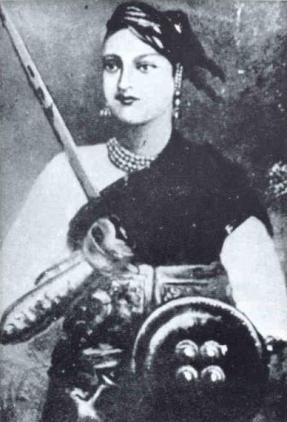
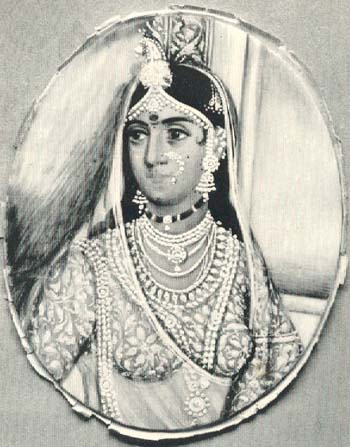
झाँसी की रानी
रचनाकार: सुभद्रा कुमारी चौहान
सिंहासन हिल उठे राजवंशों ने भृकुटी तानी थी,
बूढ़े भारत में आई फिर से नयी जवानी थी,
गुमी हुई आज़ादी की कीमत सबने पहचानी थी,
दूर फिरंगी को करने की सबने मन में ठानी थी।
चमक उठी सन सत्तावन में, वह तलवार पुरानी थी,
बुंदेले हरबोलों के मुँह हमने सुनी कहानी थी,
खूब लड़ी मर्दानी वह तो झाँसी वाली रानी थी।।
कानपूर के नाना की, मुँहबोली बहन छबीली थी,
लक्ष्मीबाई नाम, पिता की वह संतान अकेली थी,
नाना के सँग पढ़ती थी वह, नाना के सँग खेली थी,
बरछी ढाल, कृपाण, कटारी उसकी यही सहेली थी।
वीर शिवाजी की गाथायें उसकी याद ज़बानी थी,
बुंदेले हरबोलों के मुँह हमने सुनी कहानी थी,
खूब लड़ी मर्दानी वह तो झाँसी वाली रानी थी।।
लक्ष्मी थी या दुर्गा थी वह स्वयं वीरता की अवतार,
देख मराठे पुलकित होते उसकी तलवारों के वार,
नकली युद्ध-व्यूह की रचना और खेलना खूब शिकार,
सैन्य घेरना, दुर्ग तोड़ना ये थे उसके प्रिय खिलवार।
महाराष्टर-कुल-देवी उसकी भी आराध्य भवानी थी,
बुंदेले हरबोलों के मुँह हमने सुनी कहानी थी,
खूब लड़ी मर्दानी वह तो झाँसी वाली रानी थी।।
हुई वीरता की वैभव के साथ सगाई झाँसी में,
ब्याह हुआ रानी बन आई लक्ष्मीबाई झाँसी में,
राजमहल में बजी बधाई खुशियाँ छाई झाँसी में,
चित्रा ने अर्जुन को पाया, शिव से मिली भवानी थी,
बुंदेले हरबोलों के मुँह हमने सुनी कहानी थी,
खूब लड़ी मर्दानी वह तो झाँसी वाली रानी थी।।
उदित हुआ सौभाग्य, मुदित महलों में उजियाली छाई,
किंतु कालगति चुपके-चुपके काली घटा घेर लाई,
तीर चलाने वाले कर में उसे चूड़ियाँ कब भाई,
रानी विधवा हुई, हाय! विधि को भी नहीं दया आई।
निसंतान मरे राजाजी रानी शोक-समानी थी,
बुंदेले हरबोलों के मुँह हमने सुनी कहानी थी,
खूब लड़ी मर्दानी वह तो झाँसी वाली रानी थी।।
बुझा दीप झाँसी का तब डलहौज़ी मन में हरषाया,
राज्य हड़प करने का उसने यह अच्छा अवसर पाया,
फ़ौरन फौजें भेज दुर्ग पर अपना झंडा फहराया,
लावारिस का वारिस बनकर ब्रिटिश राज्य झाँसी आया।
अश्रुपूर्णा रानी ने देखा झाँसी हुई बिरानी थी,
बुंदेले हरबोलों के मुँह हमने सुनी कहानी थी,
खूब लड़ी मर्दानी वह तो झाँसी वाली रानी थी।।
अनुनय विनय नहीं सुनती है, विकट शासकों की माया,
व्यापारी बन दया चाहता था जब यह भारत आया,
डलहौज़ी ने पैर पसारे, अब तो पलट गई काया,
राजाओं नव्वाबों को भी उसने पैरों ठुकराया।
रानी दासी बनी, बनी यह दासी अब महरानी थी,
बुंदेले हरबोलों के मुँह हमने सुनी कहानी थी,
खूब लड़ी मर्दानी वह तो झाँसी वाली रानी थी।।
छिनी राजधानी दिल्ली की, लखनऊ छीना बातों-बात,
कैद पेशवा था बिठुर में, हुआ नागपुर का भी घात,
उदैपुर, तंजौर, सतारा, करनाटक की कौन बिसात?
जबकि सिंध, पंजाब ब्रह्म पर अभी हुआ था वज्र-निपात।
बंगाले, मद्रास आदि की भी तो वही कहानी थी,
बुंदेले हरबोलों के मुँह हमने सुनी कहानी थी,
खूब लड़ी मर्दानी वह तो झाँसी वाली रानी थी।।
रानी रोयीं रिनवासों में, बेगम ग़म से थीं बेज़ार,
उनके गहने कपड़े बिकते थे कलकत्ते के बाज़ार,
सरे आम नीलाम छापते थे अंग्रेज़ों के अखबार,
‘नागपूर के ज़ेवर ले लो लखनऊ के लो नौलख हार’।
यों परदे की इज़्ज़त परदेशी के हाथ बिकानी थी,
बुंदेले हरबोलों के मुँह हमने सुनी कहानी थी,
खूब लड़ी मर्दानी वह तो झाँसी वाली रानी थी।।
कुटियों में भी विषम वेदना, महलों में आहत अपमान,
वीर सैनिकों के मन में था अपने पुरखों का अभिमान,
नाना धुंधूपंत पेशवा जुटा रहा था सब सामान,
बहिन छबीली ने रण-चण्डी का कर दिया प्रकट आहवान।
हुआ यज्ञ प्रारम्भ उन्हें तो सोई ज्योति जगानी थी,
बुंदेले हरबोलों के मुँह हमने सुनी कहानी थी,
खूब लड़ी मर्दानी वह तो झाँसी वाली रानी थी।।
महलों ने दी आग, झोंपड़ी ने ज्वाला सुलगाई थी,
यह स्वतंत्रता की चिनगारी अंतरतम से आई थी,
झाँसी चेती, दिल्ली चेती, लखनऊ लपटें छाई थी,
मेरठ, कानपूर, पटना ने भारी धूम मचाई थी,
जबलपूर, कोल्हापूर में भी कुछ हलचल उकसानी थी,
बुंदेले हरबोलों के मुँह हमने सुनी कहानी थी,
खूब लड़ी मर्दानी वह तो झाँसी वाली रानी थी।।
इस स्वतंत्रता महायज्ञ में कई वीरवर आए काम,
नाना धुंधूपंत, ताँतिया, चतुर अज़ीमुल्ला सरनाम,
अहमदशाह मौलवी, ठाकुर कुँवरसिंह सैनिक अभिराम,
भारत के इतिहास गगन में अमर रहेंगे जिनके नाम।
लेकिन आज जुर्म कहलाती उनकी जो कुरबानी थी,
बुंदेले हरबोलों के मुँह हमने सुनी कहानी थी,
खूब लड़ी मर्दानी वह तो झाँसी वाली रानी थी।।
इनकी गाथा छोड़, चले हम झाँसी के मैदानों में,
जहाँ खड़ी है लक्ष्मीबाई मर्द बनी मर्दानों में,
लेफ्टिनेंट वाकर आ पहुँचा, आगे बड़ा जवानों में,
रानी ने तलवार खींच ली, हुया द्वन्द्ध असमानों में।
ज़ख्मी होकर वाकर भागा, उसे अजब हैरानी थी,
बुंदेले हरबोलों के मुँह हमने सुनी कहानी थी,
खूब लड़ी मर्दानी वह तो झाँसी वाली रानी थी।।
रानी बढ़ी कालपी आई, कर सौ मील निरंतर पार,
घोड़ा थक कर गिरा भूमि पर गया स्वर्ग तत्काल सिधार,
यमुना तट पर अंग्रेज़ों ने फिर खाई रानी से हार,
विजयी रानी आगे चल दी, किया ग्वालियर पर अधिकार।
अंग्रेज़ों के मित्र सिंधिया ने छोड़ी रजधानी थी,
बुंदेले हरबोलों के मुँह हमने सुनी कहानी थी,
खूब लड़ी मर्दानी वह तो झाँसी वाली रानी थी।।
विजय मिली, पर अंग्रेज़ों की फिर सेना घिर आई थी,
अबके जनरल स्मिथ सम्मुख था, उसने मुहँ की खाई थी,
काना और मंदरा सखियाँ रानी के संग आई थी,
युद्ध श्रेत्र में उन दोनों ने भारी मार मचाई थी।
पर पीछे ह्यूरोज़ आ गया, हाय! घिरी अब रानी थी,
बुंदेले हरबोलों के मुँह हमने सुनी कहानी थी,
खूब लड़ी मर्दानी वह तो झाँसी वाली रानी थी।।
तो भी रानी मार काट कर चलती बनी सैन्य के पार,
किन्तु सामने नाला आया, था वह संकट विषम अपार,
घोड़ा अड़ा, नया घोड़ा था, इतने में आ गये अवार,
रानी एक, शत्रु बहुतेरे, होने लगे वार-पर-वार।
घायल होकर गिरी सिंहनी उसे वीर गति पानी थी,
बुंदेले हरबोलों के मुँह हमने सुनी कहानी थी,
खूब लड़ी मर्दानी वह तो झाँसी वाली रानी थी।।
रानी गई सिधार चिता अब उसकी दिव्य सवारी थी,
मिला तेज से तेज, तेज की वह सच्ची अधिकारी थी,
अभी उम्र कुल तेइस की थी, मनुज नहीं अवतारी थी,
हमको जीवित करने आयी बन स्वतंत्रता-नारी थी,
दिखा गई पथ, सिखा गई हमको जो सीख सिखानी थी,
बुंदेले हरबोलों के मुँह हमने सुनी कहानी थी,
खूब लड़ी मर्दानी वह तो झाँसी वाली रानी थी।।
जाओ रानी याद रखेंगे ये कृतज्ञ भारतवासी,
यह तेरा बलिदान जगावेगा स्वतंत्रता अविनासी,
होवे चुप इतिहास, लगे सच्चाई को चाहे फाँसी,
हो मदमाती विजय, मिटा दे गोलों से चाहे झाँसी।
तेरा स्मारक तू ही होगी, तू खुद अमिट निशानी थी,
बुंदेले हरबोलों के मुँह हमने सुनी कहानी थी,
खूब लड़ी मर्दानी वह तो झाँसी वाली रानी थी।।
(The so-called Jumping Point. The Rani is claimed to have jumped her horse from this point on the wall to the ground below and so make her escape. The figures in red and blue give an idea of the scale. This plus the rough and sloping ground below must surely mean that any horse would have been killed, not to mention the rider. The Rani was a good rider, but physics is physics. It is somewhat more likely that she left by the gate.)
Jhansi Ki Rani Lakshmibai BiographyLakshmibai, The Rani Queen of Jhansi 19 November 1835 – 17 June 1858 known as Jhansi Ki Rani, was the queen of the Maratha-ruled princely state of Jhansi, was one of the leading figures of the Indian Rebellion of 1857, and a symbol of resistance to British rule in India. She has gone down in Indian history as a legendary figure, as India's "Joan of Arc. she was called by the name Manikarnika. Affectionately, her family members called her Manu. At a tender age of four, she lost her mother. As a result, the responsibility of raising her fell upon her father. While pursuing studies, she also took formal training in martial arts, which included horse riding, shooting and fencing. To know the complete life history of Rani Laxmibai of Jhansi, read on
Originally named Manikarnika at birth nicknamed Manu , she was born on 19 November 1835 at Kashi Varanasi to a Maharashtrian Karhade Brahmin family from Dwadashi, District Satara. She lost her mother at the age of four. She was educated at home. Her father Moropant Tambey worked at the court of Peshwa Baji Rao II at Bithur and then travelled to the court of Raja Gangadhar Rao Newalkar, the Maharaja of Jhansi, when Manu was thirteen years old. She was married to Gangadhar Rao, the Raja of Jhansi, at the age of 14.During that period, Lord Dalhousie was the Governor General of British India. The adopted child was named Damodar Rao. As per the Hindu tradition, he was their legal heir. However, the British rulers refused to accept him as the legal heir. As per the Doctrine of Lapse, Lord Dalhousie decided to seize the state of Jhansi. Rani Lakshmibai went to a British lawyer and consulted him. Thereafter, she filed an appeal for the hearing of her case in London. But, her plea was rejected. The British authorities confiscated the state jewels. Also, an order was passed asking the Rani to leave Jhansi fort and move to the Rani Mahal in Jhansi. Laxmibai was firm about protecting the state of Jhansi
After her marriage, she was given the name Lakshmi Bai. Because of her father's influence at court, Rani Lakshmi Bai had more independence than most women, who were normally restricted to the zenana: she studied self defense, horsemanship, archery, and even formed her own army out of her female friends at court.Rani Lakshmi Bai gave birth to a son in 1851, however this child died when he was about four months old. After the death of their son, the Raja and Rani of Jhansi adopted Damodar Rao. However, it is said that her husband the Raja never recovered from his son's death, and he died on 21 November 1853 of a broken heart.
Because Damodar Rao was adopted and not biologically related to the Raja, the East India Company, under Governor-General Lord Dalhousie, was able to install the Doctrine of Lapse, rejecting Rao's rightful claim to the throne. Dalhousie then annexed Jhansi, saying that the throne had become "lapsed" and thus put Jhansi under his "protection". In March 1854, the Rani was given a pension of 60,000 rupees and ordered to leave the palace at the Jhansi fort.
(One of two large cannon on display at Jhansi Fort. This one is the Bhavani Shankar cannon which was operated by Moti Bai.)
Rani Jhansi was determined not to give up Jhansi. She strengthened its defences and assembled a volunteer army. Women were also given military training. Rani's forces were joined by warriors including Gulam Gaus Khan, Dost Khan, Khuda Baksh, Lala Bhau Bakshi, Moti Bai, Sunder-Mundar, Kashi Bai, Deewan Raghunath Singh and Deewan Jawahar Singh.
(The memorial to Gulam Gaus Khan, Moti Bai and Khudabaks. The three are remembered together as a symbol of unity. The Panch Mahal is in the right background along with a satellite dish)
While this was happening in Jhansi, on May 10, 1857 the Sepoy (soldier) Mutiny of India started in Meerut. This would become the starting point for the rebellion against the British. It began after rumours were put about that the new bullet casings for their Enfield rifles were coated with pork/beef fat, pigs being taboo to Muslims and cows sacred to Hindus and thus forbidden to eat. British commanders insisted on their use and started to discipline anyone who disobeyed. During this rebellion many British civilians, including women, and children were killed by the sepoys. The British wanted to end the rebellion quickly.
Meanwhile, unrest began to spread throughout India and in May of 1857, the First War of Indian Independence erupted in numerous pockets across the northern subcontinent. During this chaotic time, the British were forced to focus their attentions elsewhere, and Lakshmi Bai was essentially left to rule Jhansi alone. During this time, her qualities were repeatedly demonstrated as she was able swiftly and efficiently to lead her troops against skirmishes breaking out in Jhansi. Through this leadership Lakshmi Bai was able to keep Jhansi relatively calm and peaceful in the midst of the Empire’s unrest.
The letter was written by Lakshmibai, Rani of Jhansi, shortly before the Indian mutiny - or first war of independence - in 1857. It has been found in London in the archives of the British Library.
The Rani of Jhansi has often been called the "Joan of Arc" of the Indian independence struggle.
Academics say the discovery of the letter is hugely significant, because so little historical evidence from the Rani of Jhansi's lifetime exists.
Up to this point, she had been hesitant to rebel against the British, and there is still some controversy over her role in the massacre of the British HEIC officials and their wives and children on the 8th June 1857 at Jokhan Bagh. Her hesitation finally ended when British troops arrived under Sir Hugh Rose and laid siege to Jhansi on 23rd March 1858. Rani Jhansi with her faithful warriors decided not to surrender. The fighting continued for about two weeks. Shelling on Jhansi was very fierce. In the Jhansi army women were also carrying ammunition and were supplying food to the soldiers. Rani Lakshmi Bai was very active. She herself was inspecting the defense of the city. She rallied her troops around her and fought fiercely against the British. An army of 20,000, headed by the rebel leader Tatya Tope, was sent to relieve Jhansi and to take Lakshmi Bai to freedom. However, the British, though numbering only 1,540 in the field so as not to break the siege, were better trained and disciplined than the “raw recruits,” and these inexperienced soldiers turned and fled shortly after the British began to attack on the 31st March. Lakshmi Bai’s forces could not hold out and three days later the British were able to breach the city walls and capture the city. Yet Lakshmi Bai escaped over the wall at night and fled from her city, surrounded by her guards, many of whom were from her women’s military.
Along with the young Damodar Rao, the Rani decamped to Kalpi along with her forces where she joined other rebel forces, including those of Tatya Tope. The Rani and Tatya Tope moved on to Gwalior, where the combined rebel forces defeated the army of the Maharaja of Gwalior after his armies deserted to the rebel forces. They then occupied the strategic fort at Gwalior. However on the second day of fighting, on 18 June 1858, the Rani died.
She died on 18 June, 1858 during the battle for Gwalior with 8th Hussars that took place in Kotah-Ki-Serai near Phool Bagh area of Gwalior. She donned warrior's clothes and rode into battle to save Gwalior Fort, about 120 miles west of Lucknow in what is now the state of Uttar Pradesh. The British captured Gwalior three days later. In the report of the battle for Gwalior, General Sir Hugh Rose commented that the rani "remarkable for her beauty, cleverness and perseverance" had been "the most dangerous of all the rebel leaders".
However, the lack of a corpse to be convincingly identified as the Rani convinced Captain Rheese of the so called "bravest" regiment that she had not actually perished in the battle for Gwalior, stating publicly that:"[the] Queen of Jhansi is alive!". It is believed her funeral was arranged on same day near the spot where she was wounded. One of the her maidservants helped with the arrangement of quick funeral.Because of her bravery, courage, and wisdom, and her progressive views on women's empowerment in 19th century India, and due to her sacrifices, she became an icon of Indian independence movement. The Rani was memorialized in bronze statues at both Jhansi and Gwalior, both of which portray her on horseback.
Her father, Moropant Tambey, was captured and hanged a few days after the fall of Jhansi. Her adopted son, Damodar Rao, was given a pension by the British Raj and cared for, although he never received his inheritance.
Rani Lakshmi Bai became a national heroine and was seen as the epitome of female bravery in India. When the Indian National Army created its first female unit, it was named after her.
Indian poetess Subhadra Kumari Chauhan wrote a poem in the Veer Ras style about her, which is still recited by children in schools of contemporary India.
In a prophetic statement in the 1878 book The History of the Indian Mutiny, Colonel Malleson said "...her countrymen will always believe that she was driven by ill-treatment into rebellion; that her cause was a righteous cause; ..... To them she will always be a heroine
in 1766 Vishwas Rao Laxman was made the subedar of Jhansi. His period was from 1766 to 1769. After him Raghunath Rao (II) Newalkar was appointed the subedar of Jhansi. He was a very able administrator. He increased the revenue of the state. The MahaLakshmi Temple and the Raghunath Temple were built by him. For his own residence he constructed a beautiful building Rani Mahal in the city. in 1796 Raghunath Rao passed the subedari in favour of his brother ShivRao Hari.
After the death of Shiv Rao his grand son Ramchandra Rao was made subedar of Jhansi. He was not a good administrator. Ramchandra Rao died in 1835. After his death Raghunath Rao (III) was made his successor. in 1838 Raghunath Rao (III) also died. The British rulers then accepted Gangadhar Rao as the Raja of Jhansi. Due to the inefficient administration during the period of Raghunath Rao (III) the financial position of Jhansi was very critical. Raja Gangadhar Rao was a very good administrator. He was very generous and full of sympathy. He gave very good administration to Jhansi. During his period the local population of Jhansi was very satisfied.
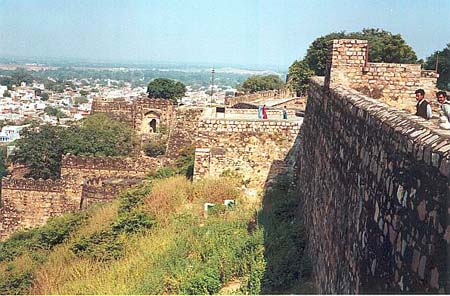
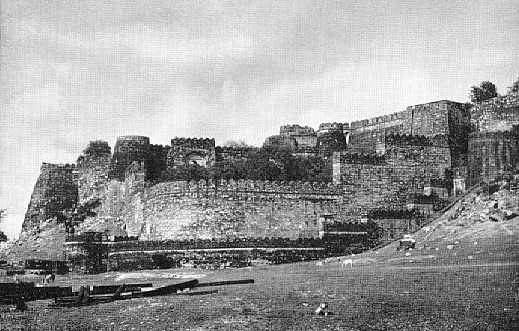 Jhansi Fort
Jhansi Fort 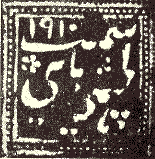 Seal of Jhansi
Seal of Jhansi 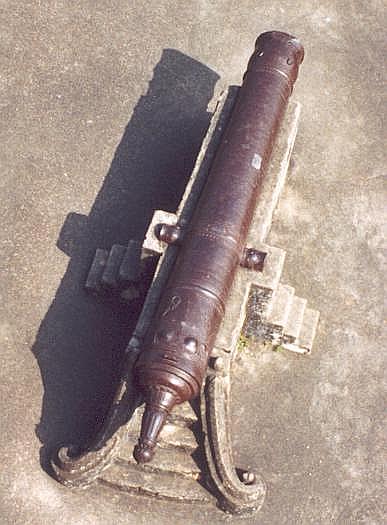
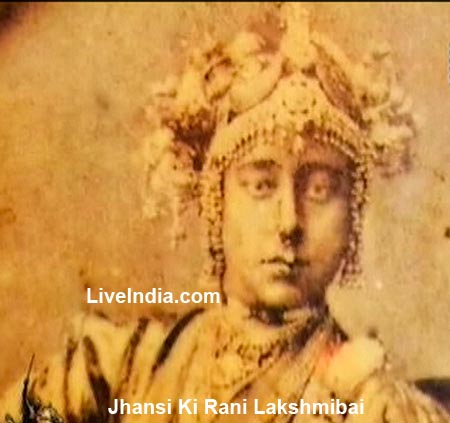
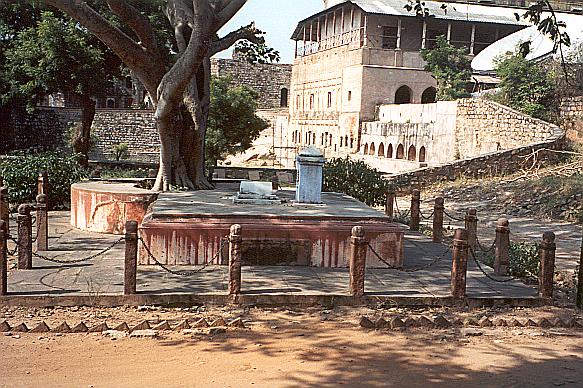
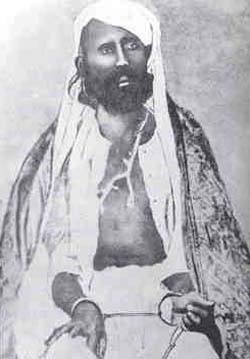
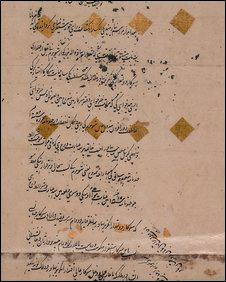
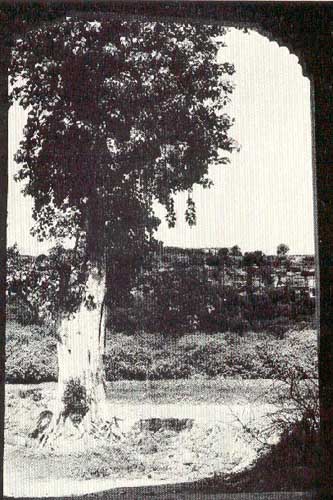



No comments:
Post a Comment